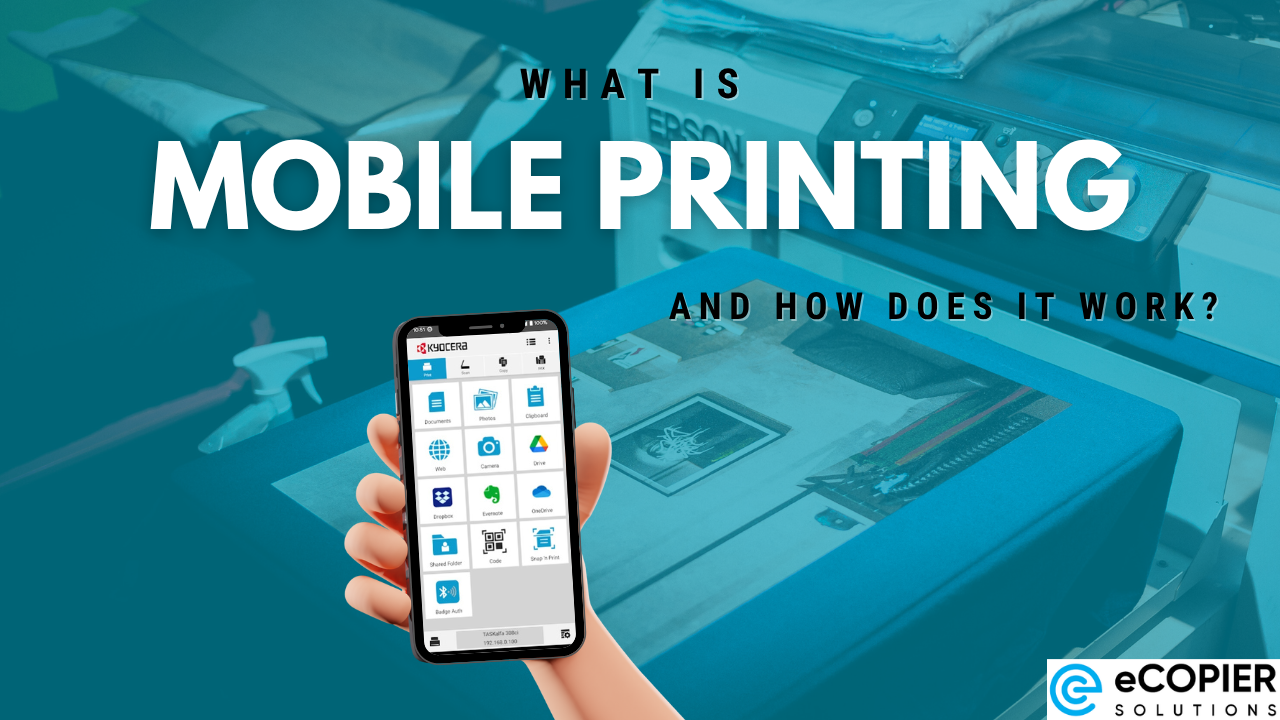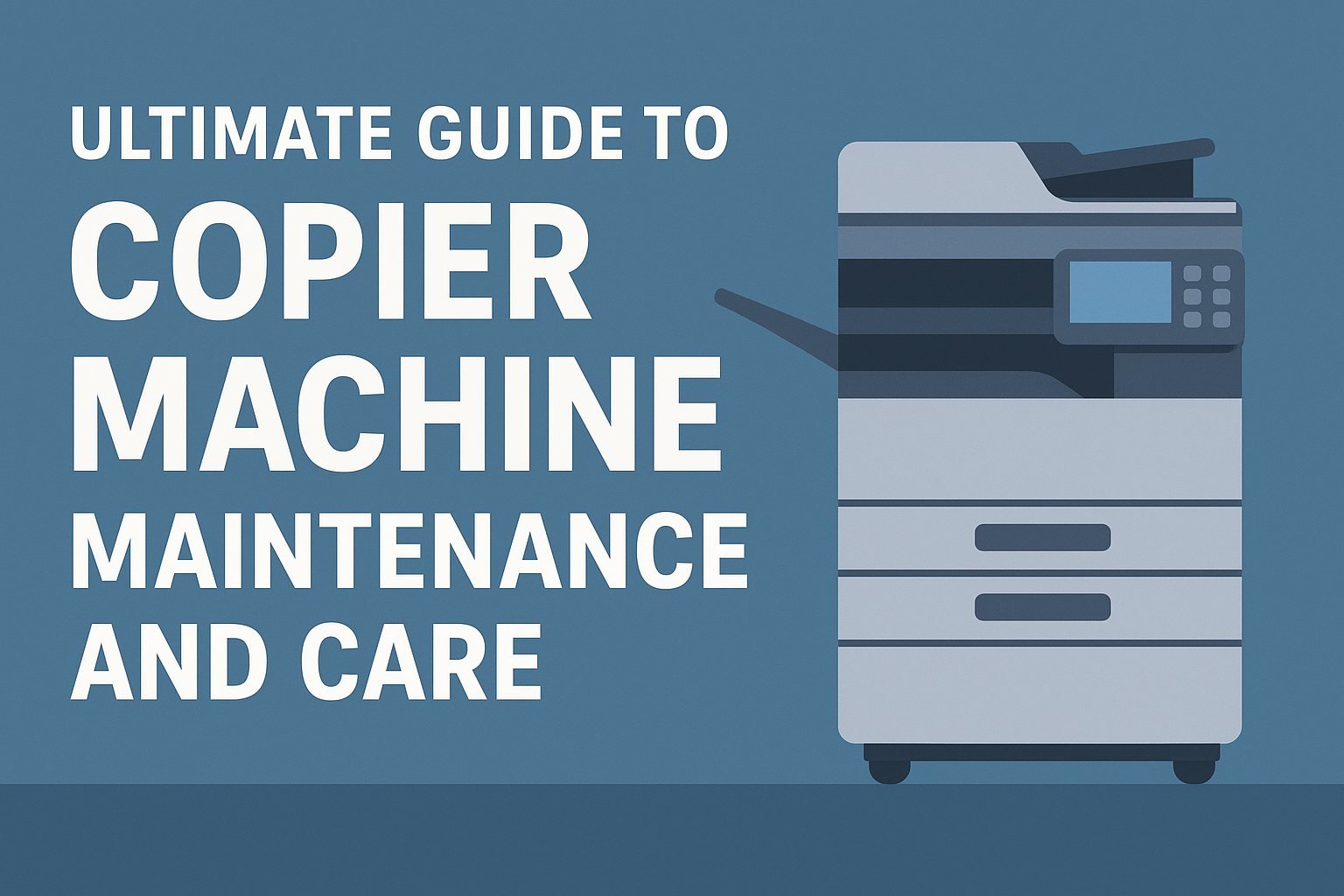Unlocking Efficiency, Security, and Growth Through Smart Document Handling
In today’s fast-paced business landscape, small enterprises face increasing pressure to optimize operations, ensure compliance, and improve customer service—all while managing limited resources. Implementing a comprehensive document management system (DMS) offers a strategic solution by digitizing, organizing, and securing vital documents. This article explores how small businesses can leverage document management to realize substantial benefits, from operational efficiency to regulatory compliance, and provides practical strategies to harness the full potential of modern DMS technology.
Enhancing Operational Efficiency through Digitization and Automation

How does document management improve operational efficiency?
Implementing a document management system (DMS) transforms how small businesses handle their information, leading to significant improvements in efficiency. The core benefit lies in digitizing physical documents, which allows instant access to files stored centrally in the cloud or on secure servers. This shift drastically reduces the time employees spend searching for records, contracts, or invoices.
A well-organized digital environment minimizes the risk of errors that often occur with paper-based systems, such as misfiling or duplicate entries. Automated workflows further streamline operations by routing documents for approval, review, or signature without manual intervention. For example, routine approval processes can be set up within the DMS to notify relevant team members automatically, reducing delays.
Advanced search capabilities and metadata tagging are vital features that enhance the speed of finding specific documents. By adding tags, categories, or keywords to files, employees can locate necessary information within seconds rather than hours. Organized folder structures, consistent naming conventions, and tags help maintain clarity and accessibility, especially when handling large volumes of documents.
Most DMSs support collaboration tools that make teamwork more effective. Version control ensures everyone works on the latest document, and review routing facilitates transparent feedback and approval. These features eliminate confusion, reduce mistakes, and accelerate decision-making processes.
Security features like encryption and access controls safeguard sensitive information, while compliance tracking ensures adherence to legal and industry regulations. Integration capabilities enable seamless data sharing with other business systems such as CRM or ERP platforms, promoting a cohesive operational environment.
In summary, by digitizing documents, automating workflows, and utilizing advanced search and tagging features, small businesses can operate more smoothly, respond faster to clients, and reduce administrative overhead, all of which contribute to a more productive and organized workspace.
Savvy Cost Management and Physical Space Optimization
What are the benefits of using a document management system for small businesses?
Implementing a document management system (DMS) offers numerous advantages for small companies. One of the main benefits is cost savings, which mainly result from digitizing paper files and reducing the need for physical storage space. By transforming physical documents into digital files, businesses can eliminate bulky filing cabinets and dedicated storage rooms, freeing up valuable office space.
This reduction in physical storage needs translates directly into lower rent or lease costs. For example, Bonanza Trade & Supply successfully created a paperless workflow, significantly cutting costs associated with storage and maintenance. Moreover, digitized documents require less physical handling, which speeds up retrieval times and decreases the labor involved in managing paper files.
Another critical area where small businesses see savings is in printing and paper expenses. Transitioning to a paperless workflow drastically reduces the frequency and volume of printing, copying, and paper purchases. RFR Capital, for instance, realized substantial expenses saved after implementing FileCenter, owing to decreased printing costs and a decline in paper consumption.
Beyond direct cost savings, a digital document system enhances overall operational efficiency. Automated sorting, indexing, and optical character recognition (OCR) enable quick document retrieval, significantly reducing the time staff spend searching for files. Also, cloud storage facilitates easy access and collaboration from any location, reducing delays in workflows and improving customer service.
In summary, small businesses benefit financially and operationally by embracing digital document management. It minimizes physical space requirements, cuts down on printing and paper costs, accelerates document handling, and ultimately leads to more efficient and cost-effective business operations.
Security, Compliance, and Risk Mitigation

How does document management enhance security and compliance?
Implementing a robust document management system (DMS) significantly strengthens a business’s security and compliance posture. These systems incorporate advanced data security features such as encryption—specifically 256-bit AES encryption—that protect sensitive information both during storage and transmission.
Access controls within DMS are integral to security. Role-based permissions and multi-factor authentication ensure only authorized personnel can view or modify confidential documents. These controls are complemented by activity logging and audit trails, providing a clear record of who accessed or altered a document and when. This transparency is vital for regulatory compliance and internal accountability.
Beyond security, DMS solutions streamline adherence to legal and industry regulations. Many systems include automatic retention policies that specify how long documents should be kept, helping businesses meet requirements like GDPR, HIPAA, and SEC regulations. Electronic signatures and version control features guarantee the integrity of legal documents, preventing unauthorized changes and facilitating verifiable audit processes.
To further prevent data loss, DMS platforms support data redundancy through secure backup mechanisms. These backups, stored locally or in the cloud, ensure business continuity even in the event of hardware failures, natural disasters, or cyberattacks. Additionally, secure transmission protocols and remote access controls safeguard data during transfer, while user activity monitoring helps identify and respond to suspicious behavior.
In essence, centralizing document storage within a compliant, secure framework reduces risks of breaches and non-compliance. Automating compliance workflows and maintaining detailed logs not only protect data but also simplify regulatory reporting and audits. By adopting an integrated DMS, small businesses can effectively mitigate security threats, uphold legal standards, and ensure resilient operations.
Building a Strong Foundation: Strategies for Successful Implementation

How can small businesses implement effective document management strategies?
Implementing a robust document management system (DMS) is crucial for small businesses aiming to enhance efficiency, security, and compliance. The first step is assessing current document workflows to identify pain points, such as misfiling, delays in retrieval, or excessive paper storage.
Once the assessment is complete, selecting the right DMS solution tailored to the business's specific needs is vital. Factors to consider include scalability, ease of use, security features like encryption and access controls, integrations with existing tools like CRM or email platforms, and support for automation. Cloud-based options are popular for their flexibility, remote access, and off-site backup capabilities.
Effective staff training and ongoing support are essential components. Educating employees about proper document organization, security protocols, and system functionalities ensures consistent adherence to policies. Regular updates and system reviews help address issues promptly and adapt to changing requirements.
Establishing clear policies and procedures forms the backbone of successful implementation. These policies should define how documents are created, categorized, stored, and retained. Standardizing naming conventions and folder structures facilitates quick retrieval and reduces confusion.
Digitizing paper records through scanning and OCR technology transforms physical files into searchable, editable digital documents, reducing storage costs and supporting a paperless workflow. Organizing digital files with metadata and tags ensures easy and reliable access.
Automation features like automatic version control, document routing, and approval workflows streamline operations and reduce manual errors. Maintaining a secure digital archive with regular backups safeguards against data loss and supports business continuity.
By integrating the DMS with other tools and establishing routine reviews, small businesses can sustain long-term benefits. These strategies collectively build a solid foundation, enabling organizations to manage their documents efficiently and confidently in a dynamic business environment.
Best Practices for Digitizing and Organizing Documents
What are best practices for digitizing and organizing documents in a small business?
Efficient document digitization begins with high-quality scanning and OCR (Optical Character Recognition) technology. These tools enable businesses to convert physical documents into searchable, editable digital files that can be easily retrieved and managed.
Establishing a clear and logical folder structure is crucial. Files should be organized into well-defined categories and subcategories, allowing quick access and logical navigation through the digital archive. Incorporating consistent naming conventions and tags with relevant metadata further enhances searchability.
Automating processes such as automatically sorting, indexing, and routing documents not only increases efficiency but also reduces manual errors. This can be achieved through workflow automation features in the document management system (DMS), which streamline operations and foster seamless collaboration.
Security measures, including setting access permissions, encrypting sensitive data, and maintaining audit trails, are vital to protect confidential information. Regular backups ensure data durability, while off-site cloud storage options provide disaster recovery capabilities.
Quality control during and after digitization ensures accuracy and completeness. Manual reviews can be performed until digital files meet the desired confidence thresholds, preventing misfiled or incomplete records.
Digital organization should include creating a logical folder hierarchy with clear, consistent naming conventions. Tags and metadata should be used extensively for easy filtering and quick retrieval.
Continuous staff training on best practices for document handling and system usage promotes consistency and maximizes system benefits. Regular audits of the digital archive and process evaluations help identify areas for improvement.
By implementing comprehensive strategies covering scanning quality, logical organization, security, and automation, small businesses can build an effective, scalable digital filing system. This supports seamless collaboration, ensures compliance with legal standards, and enhances overall business continuity.
Below is a summary table highlighting the main steps and considerations:
| Step | Focus Area | Description |
|---|---|---|
| 1 | High-Quality Scanning & OCR | Use reliable scanners and OCR technology for accurate digitization. |
| 2 | Logical Folder Structure | Create organized folders with clear hierarchy and naming conventions. |
| 3 | Metadata & Tagging | Use consistent metadata for easy search and retrieval. |
| 4 | Security Protocols | Apply access controls, encryption, and audit logs to protect data. |
| 5 | Backup & Disaster Recovery | Regularly back up data, utilize cloud storage for off-site safety. |
| 6 | Quality Control | Perform manual reviews to ensure digitization accuracy. |
| 7 | Workflow Automation | Automate document sorting, indexing, and routing processes. |
| 8 | Staff Training | Educate employees on proper procedures and system use. |
| 9 | Continuous Evaluation | Regularly review and optimize the digitization process. |
Incorporating these practices will help small businesses achieve a well-organized, secure, and efficient digital document system, supporting growth and operational resilience.
Harnessing Cloud Power for Flexible, Secure Document Access

What are the advantages of cloud-based document management solutions?
Cloud-based document management solutions have become essential tools for modern small businesses. They dramatically improve the way organizations access, share, and secure their documents. One of the primary benefits is enhanced accessibility. Employees can retrieve and work on documents from any location, whether they are in the office, working remotely, or on the go. This flexibility not only supports remote work but also accelerates collaboration across teams, regardless of geographical boundaries.
Real-time synchronization and version control are other significant advantages of cloud solutions. Multiple users can edit documents simultaneously, with changes instantly reflected to everyone involved. This reduces errors, prevents version conflicts, and streamlines workflows. Workflow automation features further simplify routine tasks like approval processes and notifications, saving time and minimizing manual effort.
Security remains a critical concern, and cloud providers invest heavily in safeguarding data. They offer advanced security features such as end-to-end encryption, role-based access controls, and secure login protocols. Automatic backup and disaster recovery options ensure data integrity even in case of cyberattacks or hardware failures.
Another key benefit is scalability. As small businesses grow, their document storage needs increase. Cloud-based systems allow for easy scaling — whether adding more storage capacity or users — without the need for expensive hardware upgrades. This adaptability supports long-term growth without disruptions.
Cost savings are considerable, too. Cloud solutions lower expenses by reducing the need for physical storage, minimizing maintenance costs, and eliminating the need for in-house servers and IT support. Overall, these systems help organizations streamline processes, improve security, and scale efficiently, making them a smart choice for small businesses aiming to enhance their document management capabilities.
Empowering Business Collaboration and Continuous Improvement

How does document management support business collaboration and productivity?
Document management systems (DMS) play a crucial role in fostering collaboration and improving efficiency within businesses. They serve as centralized repositories for all relevant documents, making it easier for team members to access, share, and manage files regardless of their location.
One of the key features that drive collaboration is real-time editing. Teams can simultaneously work on documents, making updates instantly visible to others. This reduces the need for back-and-forth emailing attachments and helps maintain current versions.
Version control and audit logs are vital tools that track changes over time. They allow users to view previous versions, compare edits, and restore earlier copies if necessary. These features ensure transparency, facilitate compliance, and prevent accidental overwrites or data loss.
Remote access and shared workspaces extend the capabilities of a DMS beyond the physical office. Cloud-based solutions enable employees to access files securely from any device, fostering flexible work arrangements and supporting remote teams. Shared workspaces promote teamwork and transparency, as everyone can see updates and contribute simultaneously.
Workflow automation features further enhance productivity by streamlining review and approval processes. Automated routing of documents, notifications, and task management minimize delays and reduce manual errors, freeing up valuable time for strategic activities.
Secure access controls, including role-based permissions, enhance document security and compliance with legal and industry standards. Digital signatures and encryption protect sensitive information and foster trust in electronic processes.
In summary, these functionalities not only save time and resources but also cultivate a culture of collaboration and continuous improvement. Small businesses, in particular, benefit greatly from these tools, as they enable teams to operate more efficiently, respond swiftly to changes, and keep everyone aligned on shared goals.
| Feature | Functionality | Benefits |
|---|---|---|
| Real-time collaboration | Multiple users edit documents simultaneously | Accelerates workflows, ensures current info |
| Version control | Tracks document changes, preserves previous versions | Maintains history, supports compliance |
| Remote access | Access files from anywhere securely | Supports flexible, distributed teams |
| Shared workspaces | Collaborative environment for team projects | Enhances transparency and communication |
| Workflow automation | Automates routing, approvals, notifications | Reduces delays, improves efficiency |
| Security controls | Role-based permissions, encryption, audit trails | Protects sensitive data, ensures compliance |
Adopting effective document management tools reflects a commitment to operational excellence. As small businesses leverage these advancements, they can foster a more collaborative environment, improve productivity, and adapt more quickly to evolving market demands.
Future Outlook: Embracing Digital Transformation with Document Management
Adopting a robust document management strategy enables small businesses to streamline operations, safeguard vital information, and foster collaborative growth. As digital transformation continues to evolve, leveraging cloud-based solutions, automation, and secure protocols will become even more essential for staying competitive. Small enterprises that thoughtfully implement effective document management practices can enjoy increased efficiency, compliance assurance, cost reductions, and better customer service—ultimately positioning themselves for long-term success in an increasingly digital economy.
References
- 10 Main Benefits of Document Management Software for ...
- Document Management for Small Business: Systems and ...
- Small Businesses Should Use These File Management Tips
- 5 Key Benefits of Document Management Systems for ...
- How to Streamline Document Management as a Small ...
- Best Small Business Services for Document Management
- Document Management for Small Business Best Practices
- Document Management for Small Business: 3 Reasons ...
- Document Management Systems Make a Big Impact in ...
- Why Document Management For Small Business Matters





.jpg)

























